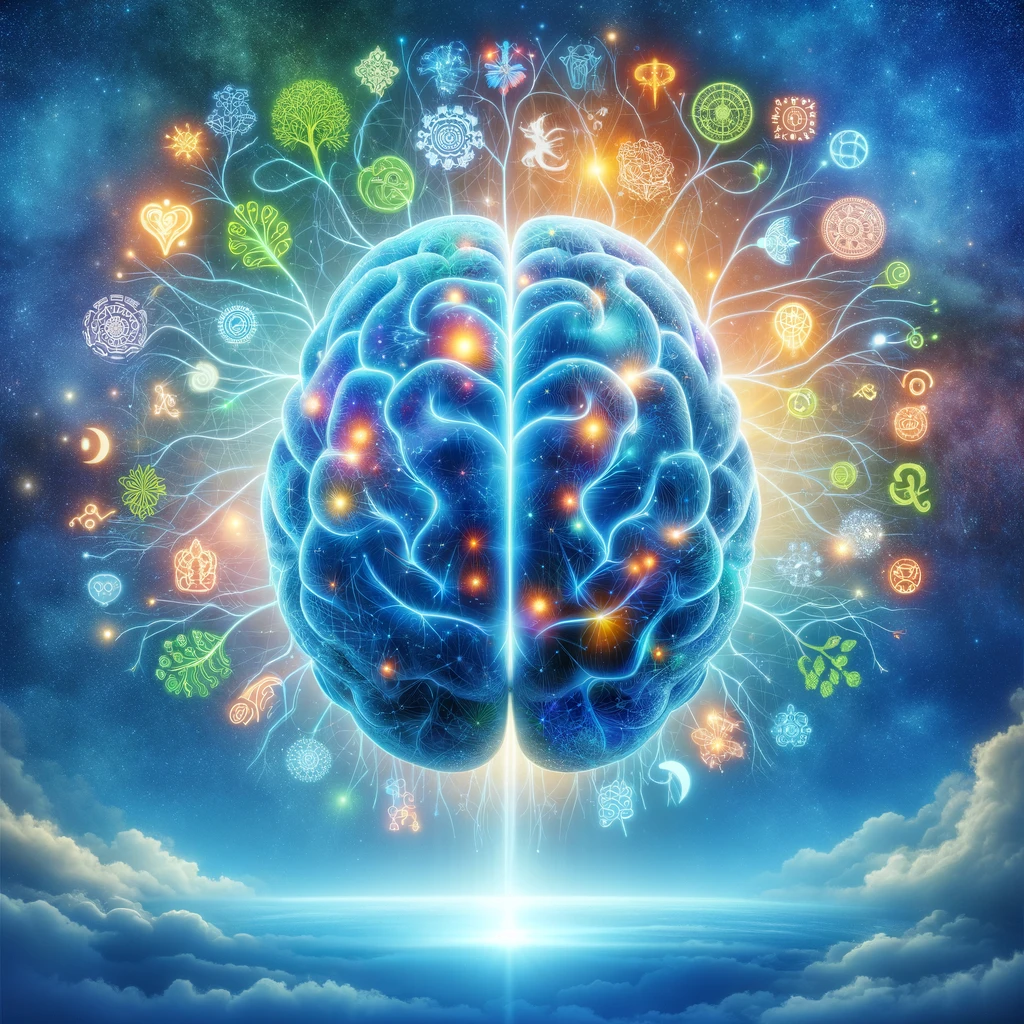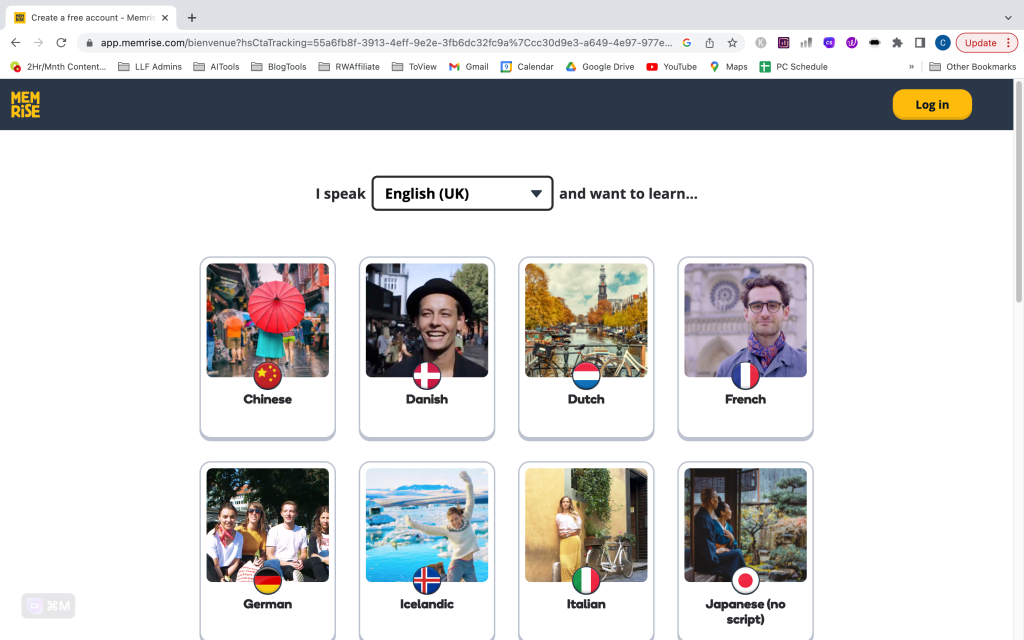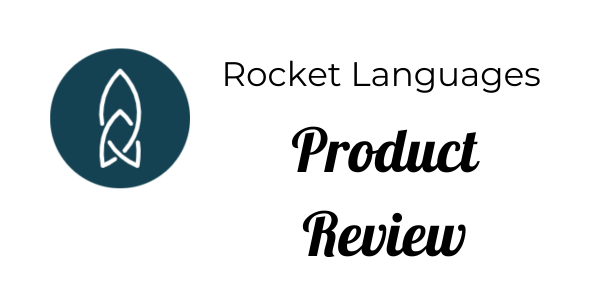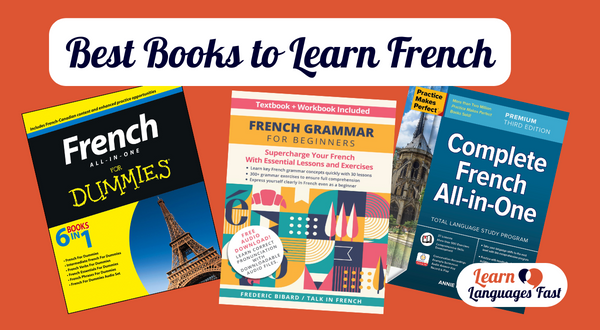Do you believe learning a language can be fast and easy?
We’ve all heard promises like “become fluent in three months” or “master a language while you sleep.” But is it really doable, or is it all a hoax, a marketing ploy, to get us to part with our hard earned cash?
Key Takeaways:
- The best way to learn a language is to combine immersion with structured study.
- Engage with the language daily through media like music, films, and conversation with native speakers, and use study aids such as apps, courses, or textbooks to understand grammar and vocabulary.
- Regular practice and real-world application can greatly enhance your learning speed and retention.
Here, you’ll learn how I picked up Dutch and Auslan, and am approaching French, and how I and language learning experts choose our tools and strategies to learn three, six, ten languages… and more! … by adopting customised, personalised approaches incorporating effective language learning methods that genuinely work.
So, let’s start this adventure together and help you achieve your language goals. Ready to jump in?
Let’s Dive In!
What Is Involved in “Language Learning”?
There are six different areas of competancy we need to address to learn language: acquiring vocabulary, building solid sentence structure and grammar skills, reading, writing, speaking, and listening.

It takes different activities to develop these skills, and the priority you will give to any one skill will depend on its relevance to your life.
It will also determine what level of language you want to work towards.
As you can see, there are many parts to this question of “language learning”, and no individual answer that fits everyone.
But if you’re determined to learn a language fast, having a clear path is crucial.
What Do We Mean By “Fast”?
People’s ideas of how quickly you can learn a language vary widely.
Some might study a language for years in school and still struggle with basic greetings. On the other hand, there are books and online tools claiming you can master a language in just 10 days.
So where is the truth? What can we really expect?
Measure in Hours, not Days, Weeks or Months
The Common European Framework of Reference for Languages (CERF) estimates that to reach A1 level in many languages (basic greetings, producing very basic information) takes 60-100 hours of instruction.
And to reach A2 (Waystage) level (beginner conversation) can take a cumulative 225 hours – about 2½ times as long to improve to A2, as it does to achieve A1. B1 proficiency, still longer.
When you understand these timeframes, you can set realistic goals.

Having said that… many self-motivated learners can progress much faster if they have the right plan and attitude.
To learn a language fast, it’s crucial to be realistic but also committed.
Integrating bite-sized lessons into your study routine can significantly enhance your ability to progress quickly. Use a language learning app to practice during idle moments, like waiting in line or during a commute.
These short, focused sessions are designed to help you learn alongside the busiest schedules, ensuring consistent practice without being overwhelming.
Additionally, game-like lessons transform the experience, making it both fun and effective. This approach helps you stay motivated by incorporating elements of play into the educational process.
Key Factors to Learn a Language Fast: Unlocking Your Path to Mastery
The Brain and Rapid Language Learning
Good news: Your brain is naturally wired to adapt when you start learning another language.

This built-in feature, called neuroplasticity, helps different parts of your brain work together to quickly soak up new words, rules, and sounds.
Apps designed by language experts exploit neuroplasticity, developing courses with expert knowledge and understanding of how the brain adapts to new linguistic environments.
By using optimised resources, you can speed up your language learning like never before.
Want to know more about how learning a new language can boost your brain? Check out our post, Cognitive Benefits of Learning a Second Language: Research Reveals.
Learn The Way You Want
Think every language learning journey is the same? Think again! You need a plan that’s custom-fitted to your individual situation, that match your specific goals and learning style for faster progress.

Knowing your specific goals is crucial to tailor your learning approach to fit your pace and interests.
Once you’ve got a clear focus, you can choose the learning methods and tools that will help you reach your goals faster and more efficiently.
Case Study: Tim Ferris
Tim Ferriss has developed his own plan for learning a new language quickly, in just 1 to 3 months.
He suggests focusing on the most commonly used words first, keeping the learning enjoyable, and finding efficient ways to learn.
He also advises picking learning materials that you find interesting, so you’ll stick with them longer.
By doing these, you get to speak the new language faster without spending years perfecting it.
For a comprehensive guide on crafting your ideal learning journey, including how to select the best language lessons for you, don’t miss our post Language Learning Strategies: Your ‘How To’ Guide to Success.
Beyond the Classroom: Practice Speaking
Tired of the same old textbooks and classroom lectures? There’s a whole world outside that can accelerate your language skills.

Immersive techniques offer you a chance to practice in real-world scenarios.
By ordering food in a restaurant, or striking up a conversation with a native speaker, engaging in meaningful conversations can make your learning come alive.
Nothing helps more than real-world application. It’s recommended to practice speaking as much as possible in these situations to build solid speaking skills.
Not only does this make language learning more enjoyable, but it also helps you understand the culture and nuances behind the words.
Navigating Challenges: Overcoming Common Language Learning Hurdles
Learning a new language comes with its share of challenges, both psychological and practical.
It’s easy to feel discouraged when you hit a plateau or when you can’t seem to remember new vocabulary.
Practical issues, like finding time in your busy schedule, can also derail your progress. Knowing how to navigate these challenges is crucial if you aim to learn a language fast.
But don’t worry; you’re not alone, and there are ways to power through these obstacles.
Start by setting manageable goals and celebrating your small wins.
And most importantly, maintain a positive mindset; self-belief can go a long way in overcoming any hurdle.
For expert advice on boosting your motivation, be sure to read our post: How to Find the Motivation to Learn Languages: 18 Free Strategies. Overcoming these challenges is integral for those looking to learn a language fast.
Digital Era: Harnessing Language Learning Apps & Technology
Welcome to the 21st century, where technology can significantly speed up your journey.

Language learning apps turn your smartphone into a 24/7 tutor.
The availability of free app options for language learning, like Duolingo, means every language course is accessible at no cost, offering accessible and effective resources for learners.
The convenience of having an app means you can practice anywhere, filling idle moments with productive study time, and the Spaced Repetition System (SRS) in most apps encourages a daily habit that helps you memorise faster.
AI-powered platforms adapt to your individual learning style, focusing on your strengths and weaknesses, so you’re not wasting time on concepts you’ve already mastered, enabling faster progress.
Online courses provide structured paths that you can tailor to your own pace. These courses often come with assessments and interactive exercises that provide immediate feedback, helping you solidify your skills more quickly.
For auditory learners, mp3 files and podcasts offer invaluable, on-the-go listening practice.
These audio resources allow you to immerate yourself in the language, improving your comprehension and pronunciation while doing other tasks.
YouTube is a diverse resource, offering tutorials, conversations, and native language content. The visual aids and real-world context found in videos can make abstract language concepts easier to grasp.

Use technology to learn a language fast.
Online books and e-readers can instantly translate words, simplifying the experience of reading in a foreign language.
Immediate translation helps you to understand context and nuance without needing to consult a separate dictionary, making your reading more efficient.
Even the old-school techniques of targetting quickly useful vocabulary, like Lonely Planet phrasebooks that have accompanying audio files, are accessible in digital format now.
By integrating these digital tools into your routine, you can fast-track your path to language proficiency.
These technologies make learning easier and faster by letting you tailor the experience to your needs, unlike traditional methods which can be rigid and slow.
Consistency and Motivation: Fueling Your Passion Every Day
Consistency is the cornerstone of effective language learning.
Showing up every day, even if it’s just for a few minutes, compounds over time into noticeable progress.

Routines help speed memorisation and recall.
Having a routine doesn’t just make your study more structured; it makes it a habit that’s hard to break.
Accountability is another key factor. Whether self-imposed or from a community, it helps maintain your focus.
Remember, little achievements can be big motivators. Small wins accumulate, especially when you’re moving fast. Celebrating wins can ignite the spark to keep you going.
Joining the ranks of learners worldwide, who are diligently working towards their language acquisition goals, can serve as an additional layer of motivation. This global community shares your passion and dedication, making the journey towards language mastery less solitary and more inspiring.
Ultimately, your drive to consistently learn and improve fuels your journey to language mastery.
Embarking on Your Adventure: A Lifelong Love for Languages
Mastering a new language is more than just a checkbox on a skill list. It’s an ongoing journey that enriches your life in countless ways.
Every word you learn brings you closer to understanding a new culture and connecting with people.
In fact, the process can even reveal insights about yourself.
This isn’t a journey with a final stop; it’s the beginning of a lifelong passion for languages.
FAQ About Language Learning:
How can I teach myself to learn a language?
To teach yourself a language, start with a structured plan using apps, textbooks, and online courses. Practice regularly by incorporating the language into daily activities, such as listening to music, watching films, and conversing with native speakers if possible. Consistency and immersion are key to progressing in your language learning journey.
What’s the best program to learn a language?
The best program to learn a language depends on your learning style and goals. For practice on-the-go, apps like Duolingo and Babbel are popular choices, offering lessons on grammar, vocabulary, and pronunciation.
For those seeking a comprehensive language course, Rocket Languages offers a well structured option, and Rosetta Stone provides immersive lessons that focus on language usage in real-life scenarios. It’s advisable to try a few programs to see which aligns best with your learning preferences.
What is the easiest language to learn?
The easiest language to learn varies depending on your native language. For English speakers, languages like Spanish, Italian, and French are considered easier due to similarities in vocabulary and grammar. Ultimately, the easiest language is one that you feel motivated to learn, as personal interest can significantly influence ease of learning.
Recent Posts:
Activate the Benefits of Daily Language Practice
Key Takeaways: Research has identified six specific benefits of DAILY language practice: Boosts overall cognitive flexibility, with benefits that extend…
Cracking the GoldList Method: Is It Really the Secret to Learning Languages?
The GoldList Method. Some love it. Some hate it. Some say there is no way it can work. Others, including…
Read more… Cracking the GoldList Method: Is It Really the Secret to Learning Languages?
Mastering New Languages: A Comprehensive Rocket Languages Review for 2024
I’m a bit of a book nerd. When I’m learning languages, I like my hard copy paper, pen and notebook.…
Read more… Mastering New Languages: A Comprehensive Rocket Languages Review for 2024
Our Top 12 Picks: Best Books to Accelerate Your French Learning
Embarking on a journey to master the French language? Discover the key to fluent communication with our comprehensive review of…
Read more… Our Top 12 Picks: Best Books to Accelerate Your French Learning
Cate is a language enthusiast sharing her language learning journey here. Apart from her native English (albeit 'Strine'*!), as an adult she has also learned Auslan (Australian Sign Language) to approximately a C1 level, Dutch to around B1/2, French to around A2, and has a smattering of other languages.
B.A. (Anthropology/Marketing), Grad. Dip. Arts (Linguistics), Grad. Cert. Entrepreneurship & Venture Development, (CELTA).
Auslan Interpreter (NAATI), and general Language Nut.
*For more information on 'Strine', visit https://en.wikipedia.org/wiki/Strine





